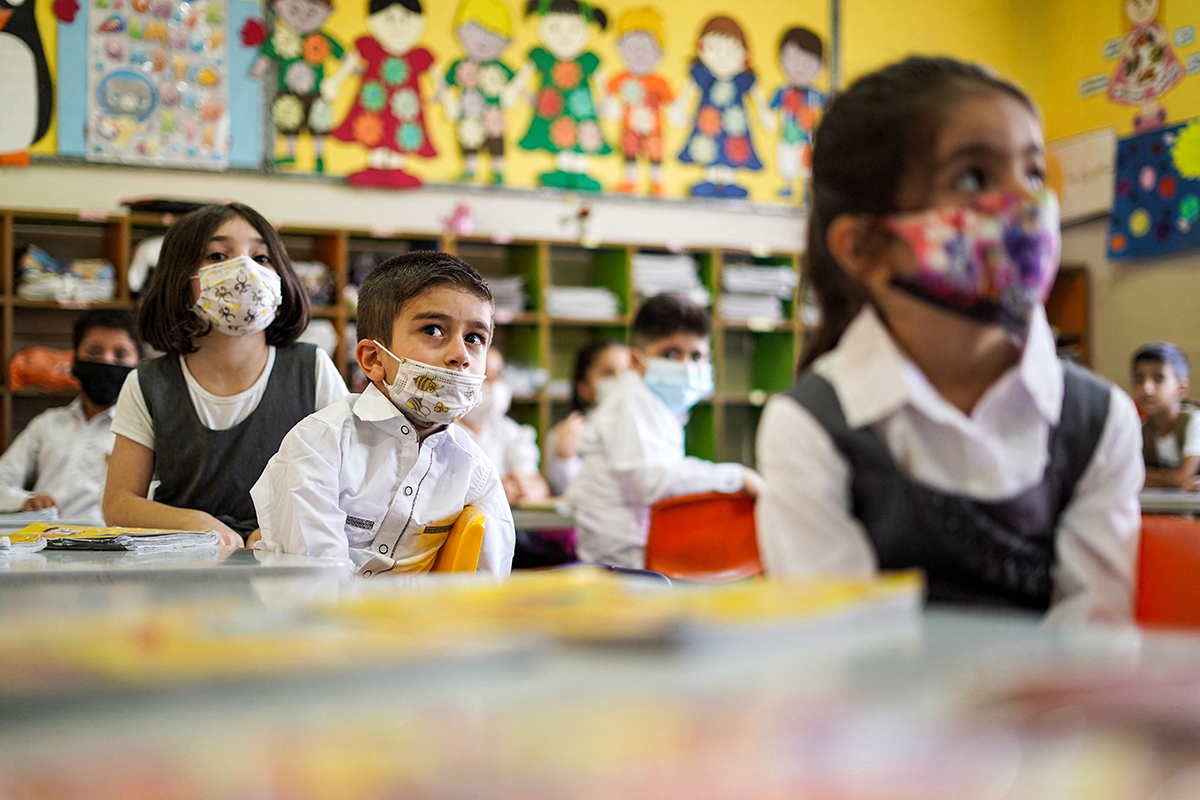This article is part of the publication Thinking MENA Futures, produced in conjunction with MEI's Strategic Foresight Initiative and the MEI Futures Forum. Read the other articles in the series here.
The Middle East and North Africa (MENA), for a variety of reasons, are unrivaled in their need for bold, creative thinking about their future.
By any measure, the MENA region faces great challenges as we stand in 2021 and look ahead to the next decade and beyond. Forces of history and of nature bear heavily on the prospects for tomorrow. Conflicts persist with roots that are decades and even centuries deep. Less than 5% of the land is arable in two-thirds of the countries of the region. The legacies of foreign intervention, authoritarian rule, and social inequality are profound, making their corrosive consequences difficult to overcome. In September 2020, Steven Cook dourly proclaimed that “it is entirely reasonable to feel hopeless about the Middle East.”
That assertion certainly is rebuttable. But even if one subscribed to Cook’s view, that is precisely why creative thinking about the future of the region — why strategic foresight — is essential.
In a recent interview, Kevin Kelly, founder of Wired magazine, made the case for strategic foresight in his characteristically incisive way. “It is extremely difficult,” he said, “to create a desirable future without first envisioning it. To imagine is really the first step in creating anything. Therefore an essential chore for making a future we want to live in, is to imagine what it is like and how we get there. That plausible path is a form of optimism. This optimistic previsualization is a necessary component of change.”
As we consider the next five years for the Middle East, and even beyond, this way of looking at the challenges — and the opportunities — has never been more vital. Momentous forces of change are at work in the region, and globally in ways that will impact it. America’s engagement is diminishing, and the nature of that engagement is changing, at the same time that China’s grows. The COVID-19 pandemic shined a bright light on citizens’ demands for more and better from their governments. Urbanization will continue to accelerate, as will connectivity (of devices, economies, innovators, and more). Artificial intelligence and robotics will transform business and work, wiping away great numbers of jobs and creating even greater numbers of new ones. The carbon-based industrial revolution will be more and more displaced by sustainable forms of energy.

The disruptions that these trends and others will set in motion hold the prospect of making life worse for the people and governments of MENA. But they have a greater chance of coalescing into what we would call preferred futures. That is, if we do one thing: take the care and time to imagine what these preferred futures might look like.
The “s” in futures is deliberate and meaningful. As David Bengston puts it, “A core principle for thinking about the future is that it is plural.” Despite our normal pattern of speaking and thinking, there is no such thing as “the” future. Which among innumerable possible futures actually emerge, for the Middle East, for anywhere and anything, is a function of what leaders do today. One of the greatest misapprehensions about strategic foresight is that it is about far distant time horizons. It isn’t. Thinking about 2030, or 2040, or beyond, is a means to an end. The end is helping leaders make decisions and take actions today that increase the likelihood of preferred futures of any time horizon, short or long.
Pointing to Kevin Kelly’s emphasis on the optimistically imaginative bent that foresight should take is deliberate as well. Considering alternative futures is a safe space for thinking beyond incremental change to true transformation. MENA leaders must be bold in what they consider if they want bold improvements in the region’s stability, quality of life, economic growth, and sustainability. Far from an exercise in Pollyanna-ism, this is a necessity. They will not and cannot get to those places if they don’t envision what those places look like.
“Considering alternative futures is a safe space for thinking beyond incremental change to true transformation.”
A recent study analyzed 83 scenarios of a “post-COVID-crisis world” developed between March and June 2020. A sobering 60% of them imagined “recovery” rooted in traditional models of economic growth and only modest change in societies globally. More than a third of the scenarios described a “more or less identical return to the pre-COVID-19 world.” This despite how the pandemic, for all its very real tragic consequences in the Middle East and throughout the world, has also opened up possibilities of radical positive change. We can’t afford to “play it safe” in the futures we imagine for post-COVID life. Nor can we when it comes to the overall futures of the MENA region. It can be fundamentally different, if leaders put equal amounts of imagination and rigor into thinking about how.
Last year, we launched MEI’s Strategic Foresight Initiative program. With an appropriate nod to the Eisenhower matrix, we see our work as both important and urgent. Leaders throughout MENA have an obligation, now and every day, to envision what futures they want to create for their governments, businesses, and social sectors. Our aim is to aid them in understanding the implications tomorrow of the forces of change the region is contending with today. When they “stand in the future” and look back, they will be better prepared to make the decisions that can transform the societies they serve.
The essays that follow in this volume are some of the futures of the MENA region, as envisioned by thoughtful innovators working today to realize them. They set an example for the foresight that the region needs and, we hope, will inspire others to add their imagination and join in that work.
Steven Kenney is the director of the Strategic Foresight Initiative at the Middle East Institute. He is also the founder and principal of Foresight Vector LLC.
Photo by Khalil Dawood/Xinhua via Getty Images
The Middle East Institute (MEI) is an independent, non-partisan, non-for-profit, educational organization. It does not engage in advocacy and its scholars’ opinions are their own. MEI welcomes financial donations, but retains sole editorial control over its work and its publications reflect only the authors’ views. For a listing of MEI donors, please click here.













